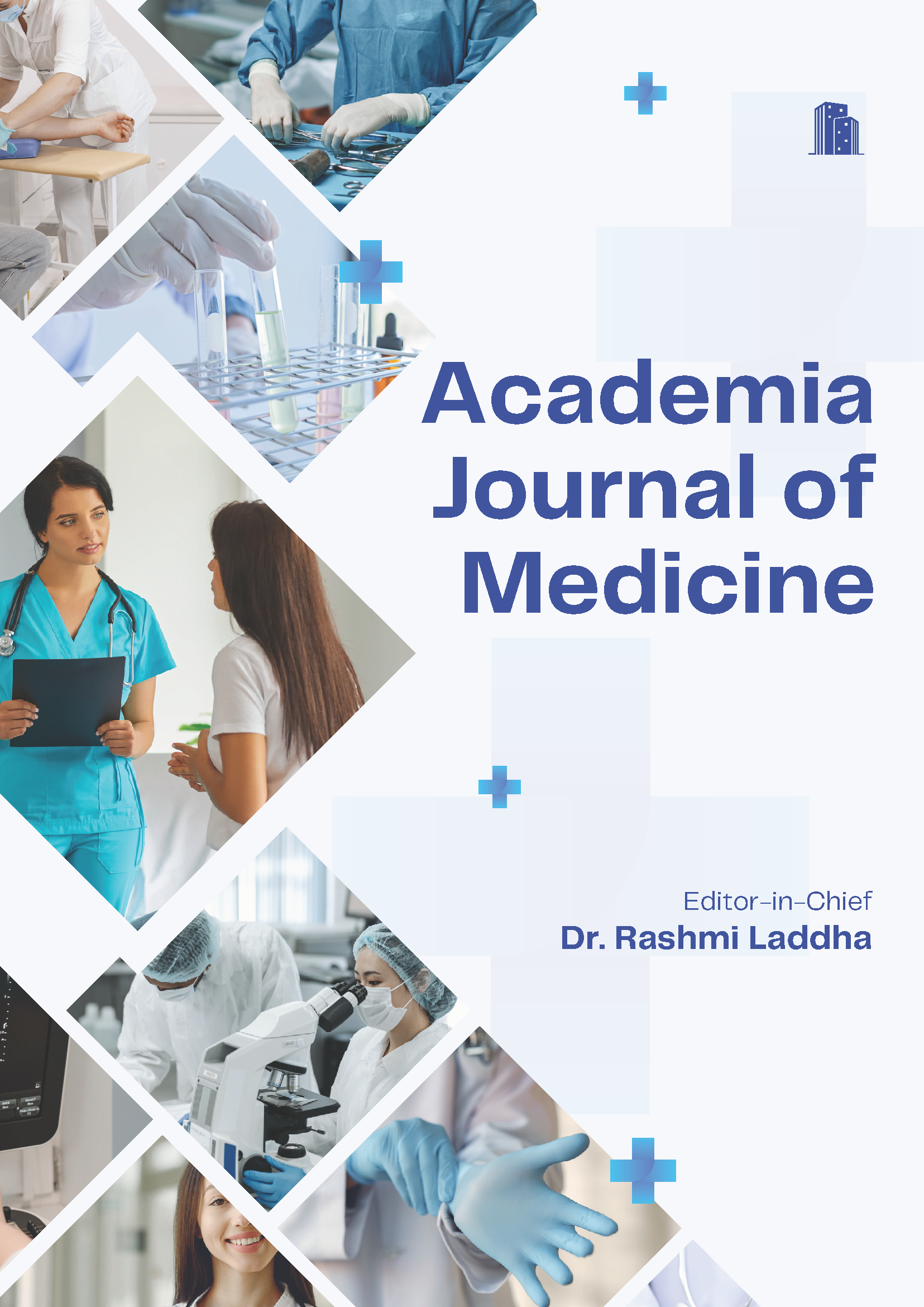Estimation of Lipid Profiles of Patients with Type-2 Diabetes Mellitus at Adoor, Kerala
Keywords:
Hyperlipidemia, Glycemic Control, Diabetic Dyslipidemia, Diabetes MellitusAbstract
Background: Lipid abnormalities in patients with diabetes are often phrased as “diabetic dyslipidemia”. The aim of the study was to evaluate the lipid profiles of patients with type-2 diabetes mellitus. Subjects and Methods: the subjects who were enrolled in this study were diabetic patients. For the study, a total of 150 diabetic patients with a history of diabetes for 10 years were arbitrarily chosen and scrutinized for dyslipidemia. Patients with other diseases and metabolic disarray were barred from the study. The patients were selected on an indiscriminate base and detailed case history was measured with all appropriate clinical checks. Results: Total 140 diabetic patients with a mean age of 49.98 ± 13.3 years were included in the study. The mean FBS of study participants was 189.78± 55.65 mg/dl. Mean triglycerides level was 203.59 ± 84.48mg/dl. Out of the total 150 patients, borderline high cholesterol (200-239 mg/dl) and high cholesterol (≥240 mg/dl) level were 29 (19.3%) and 22 (14.6%) respectively. Out of 150 subjects, 37(24.6%) had borderline high triglyceride (150-199 mg/dl) while 61 (40.6%) had high triglyceride (200-249 mg/dl) level. Conclusion: Hyperlipidemia is the most frequent snag of diabetes mellitus and it can prompt patients to precipitate atherosclerosis and microvascular difficulty. Good glycemic control can avert the advances and succession of usual lipid irregularity in diabetes like heightened triglycerides, LDL, serum cholesterol and low HDL.
Downloads
References
1. Rossi G. Diagnosis and classification of diabetes melli tus.Recent progress in medicine; 2010.
2. Guyton AC, Hall JE; 2013.
3. Diagnosis and classification of diabetes mellitus. Dia Care. 2014;37(1):81–90. Available from: https://doi.org/10.2337/ dc14-S081.
4. Mooradian AD. Dyslipidemia in type 2 diabetes mellitus. Nat Rev Endocrinol . 2009;5(3):150–159. Available from: https: //dx.doi.org/10.1038/ncpendmet1066.
5. Ambrishmithal D, Shunmugavelu M, Talwarkar PG, Hardik vasnawala AS, Raza. Prevalence of dyslipidemia in adult Indian diabetic patients: A cross-sectional study (SOLID). Indian J Endocr Metab. 2014;18(5):642–647. Available from: https: //doi.org/10.4103/2230-8210.139220.
6. Chetanashenoy MM, Shenoy GK, Rao. Dyslipidemia in Dermatological Disorders. N Am J Med Sci. 2015;7(10):421– 428. Available from: https://dx.doi.org/10.4103/1947-2714. 168657.
7. Guariguata L, Whiting DR, Hambleton I, Beagley J, Lin nenkamp U, Shaw JE. Global estimates of diabetes prevalence for 2013 and projections for 2035; 2014. Available from: https://dx.doi.org/10.1016/j.diabres.2013.11.002.
8. Santos-Gallego CG, Rosenson RS. Role of HDL in Those with Diabetes. Curr Cardiol Rep. 2014;16(9). Available from: https://dx.doi.org/10.1007/s11886-014-0512-5.
9. Gerber PA, Spirk D, Brändle M, Thoenes M, Lehmann R, Keller U. Regional differences of glycaemic control in patients with type 2 diabetes mellitus in Switzerland: a national cross sectional survey. Swiss Med Wkly. 2011;141. Available from: https://dx.doi.org/10.4414/smw.2011.13218.
10. Joshi SR, Anjana RM, Deepa M, Pradeepa R, Bhansali A, Dhandania VK. Prevalence of dyslipidemia in urban and rural India: The ICMR-INDIAN study. PLoS One. 2014;9(5):1–5. Available from: https://doi.org/10.1371/journal.pone.0096808.
11. Smith S, Lall AM. A Study on Lipid Profile Levels of Diabetics and Non- Diabetics AmongNaini Region of Allahabad, India. Turk J Biochem. 2008;33(4):138–141.
12. Taskinen MR. Diabetic dyslipidaemia: from basic research to clinical practice*. Diabetologia. 2003;46(6):733–749.
Available from: https://dx.doi.org/10.1007/s00125-003-1111- y.
13. Goldberg IJ. Diabetic dyslipidemia: causes and consequences. J Clin Endocr Metab. 2001;8(3):965–971. Available from: https://doi.org/10.1210/jcem.86.3.7304.
14. Krauss RM. Lipids and Lipoproteins in Patients With Type 2 Diabetes. Dia Care. 2004;27(6):1496–1504. Available from: https://dx.doi.org/10.2337/diacare.27.6.1496.
15. Smith S, Lall AM. A Study on Lipid Profile Levels of Diabetics and Non- Diabetics AmongNaini Region of Allahabad, India. Turk J Biochem. 2008;33(4):138–141.
16. Chatterjee MN, Shinde R. Textbook of medical laboratory technology. Metabolism of carbohydrates.(Jaypee Brothers Medical publisher )Sixth edition s. 266-330. Delhi-India; 2005.
17. Carlos A, Aguilar S, Gustavo O. High prevalence of low HDL cholesterol concentrations and mixed hyperlipidemia in a Mexican nationwide survey. J Lipid Res. 2001;42:1298–307.
18. Bhopal R, Unwin N, White M, Yallop J, Walker L, Alberti KGMM. Heterogeneity of coronary heart disease risk
factors in Indian, Pakistani, Bangladeshi, and European origin populations: cross sectional study. BMJ. 1999;319(7204):215– 220. Available from: https://dx.doi.org/10.1136/bmj.319.7204. 215.
Copyright: © the author(s), 2020. It is an open-access article distributed under the terms of the Creative Commons Attribution License (CC BY 4.0), which permits authors to retain ownership of the copyright for their content, and allow anyone to download, reuse, reprint, modify, distribute and/or copy the content as long as the original authors and source are cited.
How to cite this article: Kumari PL. Estimation of Lipid Profiles of Patients with Type-2 Diabetes Mellitus at Adoor, Kerala. Acad. J Med. 2020;3(2):6-9.
DOI: dx.doi.org/10.47008/ajm.2020.3.2.2
Source of Support: Nil, Conflict of Interest: None declared.
